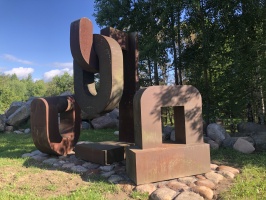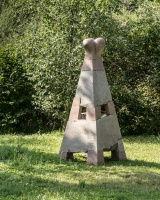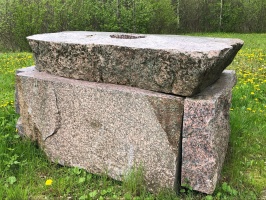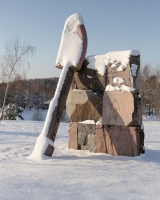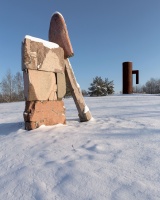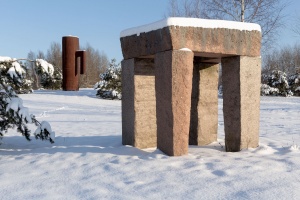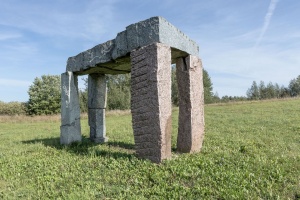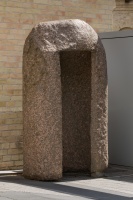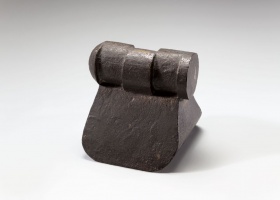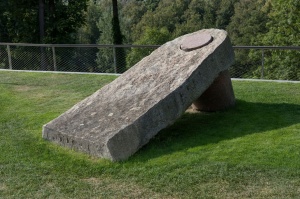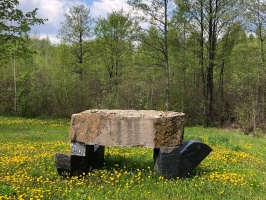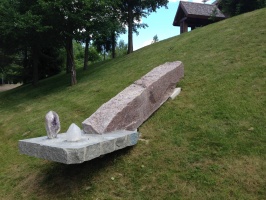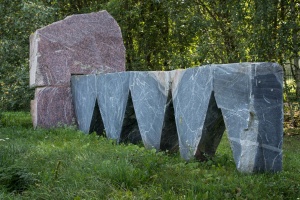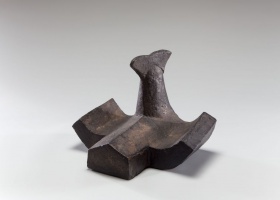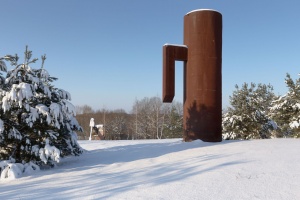
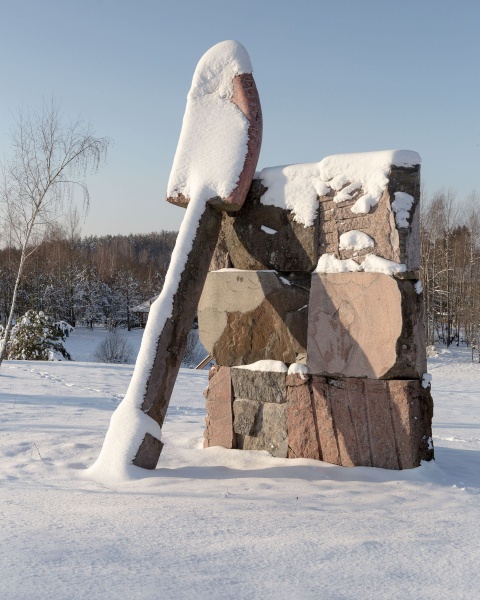


Red
| Author: |
Mindaugas Navakas (g. 1952) |
| Created: | 2004 |
| Material: | granite |
| Dimensions: | 500 × 53 cm |
In his 2014 commentary on Mindaugas Navakas’ (b. 1952) sculptures,* the famous Lithuanian art critic Alfonsas Andriuškevičius identified three key features: proportion, weight and tension. Red stands out as an example that most precisely encapsulates all three elements he highlighted. Navakas’ characteristic ‘non-existent object’, crafted from granite, prompts speculation about its intended function (is it a spoon? A shovel? A scoop?), and yet its proportions are impeccably balanced. The length, width and volume exhibit a harmonious ratio reminiscent of a universally acclaimed design object. However, Red diverges sharply from the realm of design and Pop Art, despite the temptation to draw comparisons with artists like Oldenburg, who also experimented with the proportions of everyday objects. Instead, this granite creation embodies massiveness and rawness, which are characteristic of Navakas’ work. In addition to the customary roughness and the uneven surface of granite, Red features a contrast with its polished upper part, which is a different colour. Smoothness is juxtaposed with coarseness, sleekness with angularity. But the object’s tension is not solely derived from oppositions. It is intentionally accentuated by the sculptor’s decision to place it leaning rather than upright. Navakas adeptly creates a paradox, as massive objects usually need support. The tension emerges through this deliberate choice. We only have to recall his Big Independents, scattered throughout an urban landscape, evoking a sense of breathlessness, as if the slightest movement might disrupt their equilibrium. Red shares a similar feature: not self-reliant, it depends on shelter and support. Thus, the robust granite appears fragile and vulnerable, embodying the tension between perception and reality (as orchestrated by the sculptor), which is one of the most paradoxical and appealing features of Navakas’ work. Displayed at the Jeruzalė Sculpture Park and featured in the sculptor’s retrospective exhibition ‘Glory Was at the Fingertips’, Red consistently finds a support to lean against, transforming itself with each presentation. It currently forms a cohesive composition with the sturdy and steadfast Rustic 2 (2013–2014). The latter ‘wall’ of rough-hewn granite blocks exudes confidence and an illusion of permanence, like a relic from an archaic structure. Yet this composite of two sculptures also hints at temporality. As distinct works, their connection remains precarious, subject to disruption at any moment. Should Red find another support, it would assume an entirely different role in the space.
Text author Jurgita Ludavičienė
* Mentaliniai Mindaugo Navako žaidimėliai. Naujasis Židinys-Aidai, 2014, Nr. 6, p. 62.
Source: Law firm Valiunas Ellex art album THE ART OF MATERIALS. Compiler and text author Jurgita LudavičienėExpositions: 2006. Mindaugas Navakas. /R-O/ works. Museum of Contemporary Sculpture, Oronsk, Poland. 2014. Mindaugas Navakas. Glory was at the fingertips. Lithuanian Art Museum.
© VŠĮ „Lietuvos dailės fondas“








